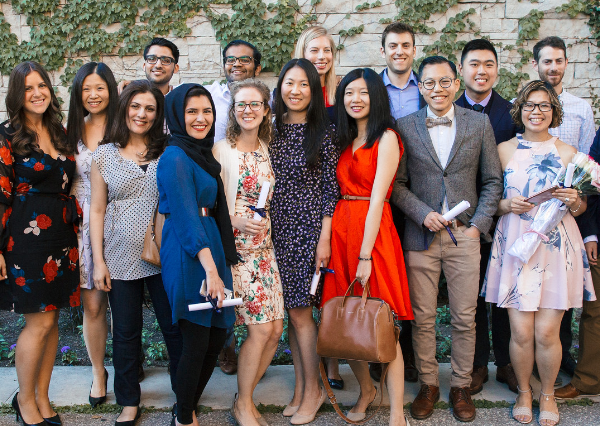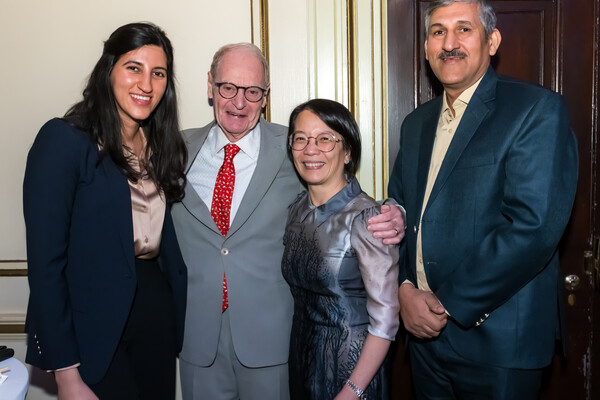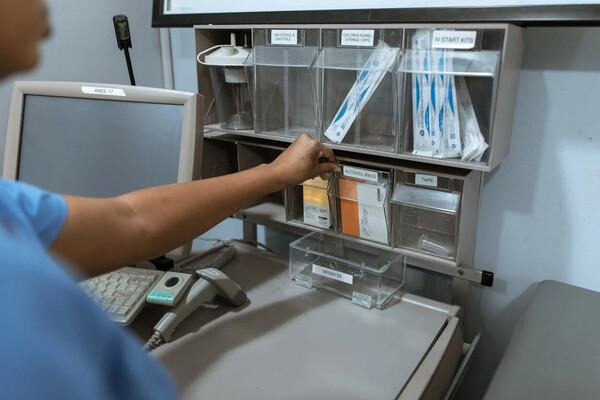Main Second Level Navigation
- Welcome
- Why Toronto?
- History of the Department
- Vision & Strategic Priorities
- Our Leadership
- Our Support Staff
- Location & Contact
- Departmental Committees
- Department of Medicine Prizes & Awards
- Department of Medicine Resident Awards
- Department of Medicine: Self-Study Report (2013 - 2018)
- Department of Medicine: Self-Study Report (2018 - 2023)
- Communication Resources
- News
- Events
Department of Medicine Self-Study: Report from the Learners

Drs. Michael Kuhlmann, GIM; Maria Jogova, Critical Care; and Abi Vijenthira, Hematology
RE: University of Toronto Internal Medicine Postgraduate Training Program
It is our pleasure to write this letter detailing our experience as residents in the Internal Medicine training program at the University of Toronto. The three of us—Michael Kuhlmann, Maria Jogova and Abi Vijenthira—entered the program in 2014. We completed three years in the core internal medicine program and a fourth year as chief medical residents at Women’s College Hospital, St. Michael’s Hospital and Mount Sinai Hospital, respectively.
Currently, Michael is in the General Internal Medicine subspecialty program, Maria is in the Critical Care subspecialty program and Abi is in the Hematology subspecialty program at the University of Toronto. Our comments will speak to our experience during the first four years of core internal medicine training.
Overall Comments
The University of Toronto internal medicine program prepares residents exceptionally well to excel as physicians in both academic and community practice. This is related to a multitude of factors including volume of patient care, depth and breadth of diagnoses seen, scholarly training and exposure, and support and mentorship of faculty staff.
Strengths of the Program
The strengths of the program can be divided into clinical exposure and training, education and curriculum, leadership, site-level support, research training, and commitment to expanding diversity and improving the learner climate.
Clinical Exposure: There is a great variety and uniqueness of patient care experiences at each hospital site. This includes exposure to socioeconomically and multiculturally diverse populations who present with a range of symptoms and diagnoses. Residents therefore have the opportunity to manage both commonly encountered “bread and butter” conditions as well as rare diagnoses. Seeing unusual conditions and understanding indications for workup and/or referral is supplemented by exposure to subspecialty clinics, some of which specialize in the management of specific and rare conditions (pulmonary hypertension, tuberculosis and HHT clinics, just to name a few). Residents are also exposed to community and ambulatory medicine in their third year of training, through two blocks assigned to each of these rotations.
Education and Curriculum: The Internal Medicine program ensures that resident teaching and education is a priority rather than an afterthought throughout the three years of the core training program. Informal and formal teaching is encouraged through preceptor and rotation evaluations that specifically inquire about the educational efforts of each clinical rotation. Formal education also takes place through the Academic Half Day, which provides residents with didactic, case- based and simulation teaching. The curriculum is set by a committee that ensures that Royal College training objectives are met.
Leadership: The current Program Director, Dr. Goguen, has been an incredible leader for the program. Her approachability, high degree of resident advocacy and diligent responses to resident concerns make her an ideal program director. Her focus on resident wellness has led to marked improvement in residents’ sense of belonging in the program. She has done a tremendous job in the face of unprecedented challenges to program structure, including the introduction of the CBME curriculum and growing patient care volumes.
Site-Level Support: A common weakness of larger residency programs is the inability to create a more intimate resident-centric learning environment. Despite the University of Toronto Internal Medicine having over 70 residents per year, this potential weakness is overcome with the creation of base-hospital sites, allowing smaller groups of residents within each year to learn in the aforementioned intimate, resident-centric environment. Each site orients its residents separately and creates a mini-community within the larger program. This includes site-led initiatives, education committees and social events. The site director and chief medical resident at each site is a direct point of contact and support for individual residents at that site and meets with each resident formally twice per year, making it easier to bring forward concerns or questions.
Research and Academic Training: There are experts and mentors in every academic field available to work with in the city, from research to medical education to the humanities to any other interest one could imagine. Although it takes initiative for residents to reach out to them, this is another strength of the program and enables people to find mentors for any interest they may have. For those interested in further research training, the Clinician Scientist Program, Clinical Investigator Program and Clinician Educator Programs are readily available. Interest groups have also been created for those residents interested in pursuing a career in Medical Education or Humanities in Medicine.
Mentorship: Mentorship is an important part of the program. The creation of a Near-Peer Mentorship program several years ago has allowed interested residents to find or become mentors through a formal, organized process. More informally, residents are frequently connected to academic or clinical mentors by their site directors or CMRs based on their interests. Finally, informal mentoring relationships form during clinical rotations. Faculty are generally quite willing to become mentors, often devoting substantial amounts of their time to guide residents along their career paths.
Commitment to Expanding Diversity and Improving Learner Climate: See comments below.
Challenges/Areas for Improvement
The current major challenge of the program is related to the volume of patient care that has increased over the past few years, likely due in part to the aging population and also to the rapidly expanding population of downtown Toronto. This has unfortunately coincided with fewer residents rotating on Clinical Teaching Units (CTUs) and subspecialty teams, leading to lower staffing numbers and higher patient-to-resident ratios. The implementation of the CBME curriculum is also a factor. This unfortunately creates a higher-stress environment for learners and at a certain threshold takes away from the educational experience.
Although seeing a large volume of patients is vital to improving one’s capabilities as a physician, we note that a delicate balance needs to be struck at the training level for patient care and safety. It is hard to learn and thoroughly and thoughtfully manage a patient’s issues when trying to rush through the day. There is less time for discussion of patient cases as a team, teaching or rounding on patients as a team for bedside learning and physical examination. During the overnight call period, volumes of consults combined with managing patients on the ward is also a challenge.
Other external factors contribute to inefficiencies of care. They include patients being geographically dispersed throughout the hospital on different wards, multiple interruptions during the day for team rounds, multidisciplinary rounds, teaching rounds and interruptions related to non-urgent pages and calls.
These issues are being addressed by a committee dedicated to restructuring the CTU experience by reorganizing housestaff (i.e., clerks, residents and attendings). Other possible solutions could include hospitalist teams that can offload CTU teams with high patient numbers. Another potential contribution to a solution could be the addition of nocturnists to help with patient volumes overnight where needed (an effort recently initiated by Toronto General Hospital).
Learning Climate
Dr. Gillian Hawker has made it clear to residents that she is committed to improving diversity in the program and has a zero tolerance policy for learner mistreatment and unprofessional faculty behaviour. Sectors of the program still struggle with this behaviour in faculty members, but there are now formal and transparent processes in place to challenge the previous norm.
In sum, the program has been exceptional for our growth and training as physicians, and we are exceptionally grateful for the opportunity to train here.
With kind regards,
Michael Kuhlmann, MB BCh BaO, FRCPC PGY5 GIM, University of Toronto
Maria Jogova, MD, FRCPC
PGY5 Critical Care, University of Toronto
Abi Vijenthira, MD, FRCPC
PGY5 Hematology, University of Toronto



